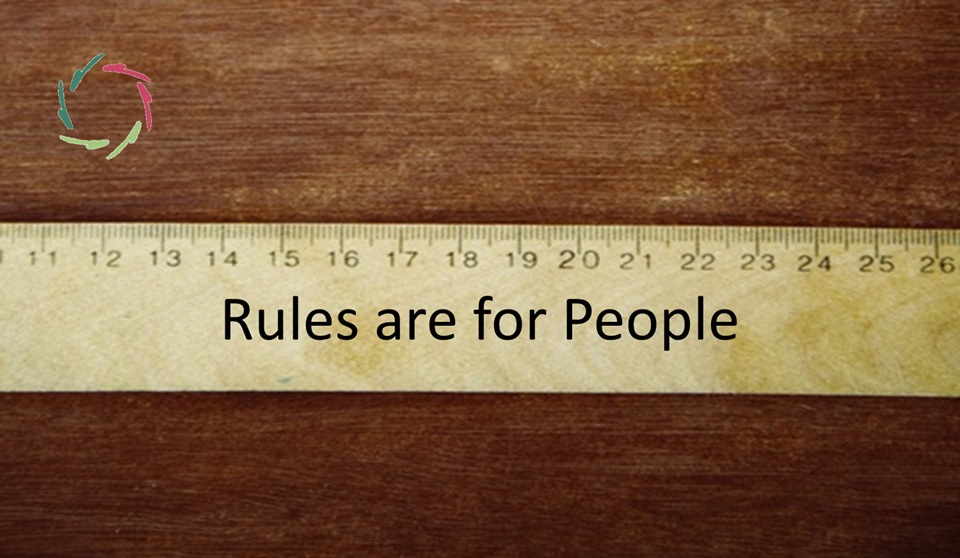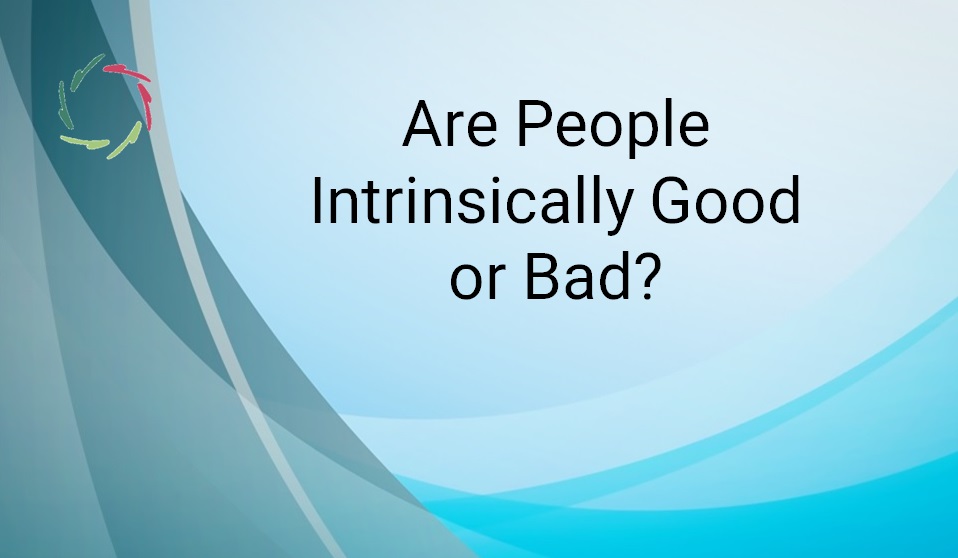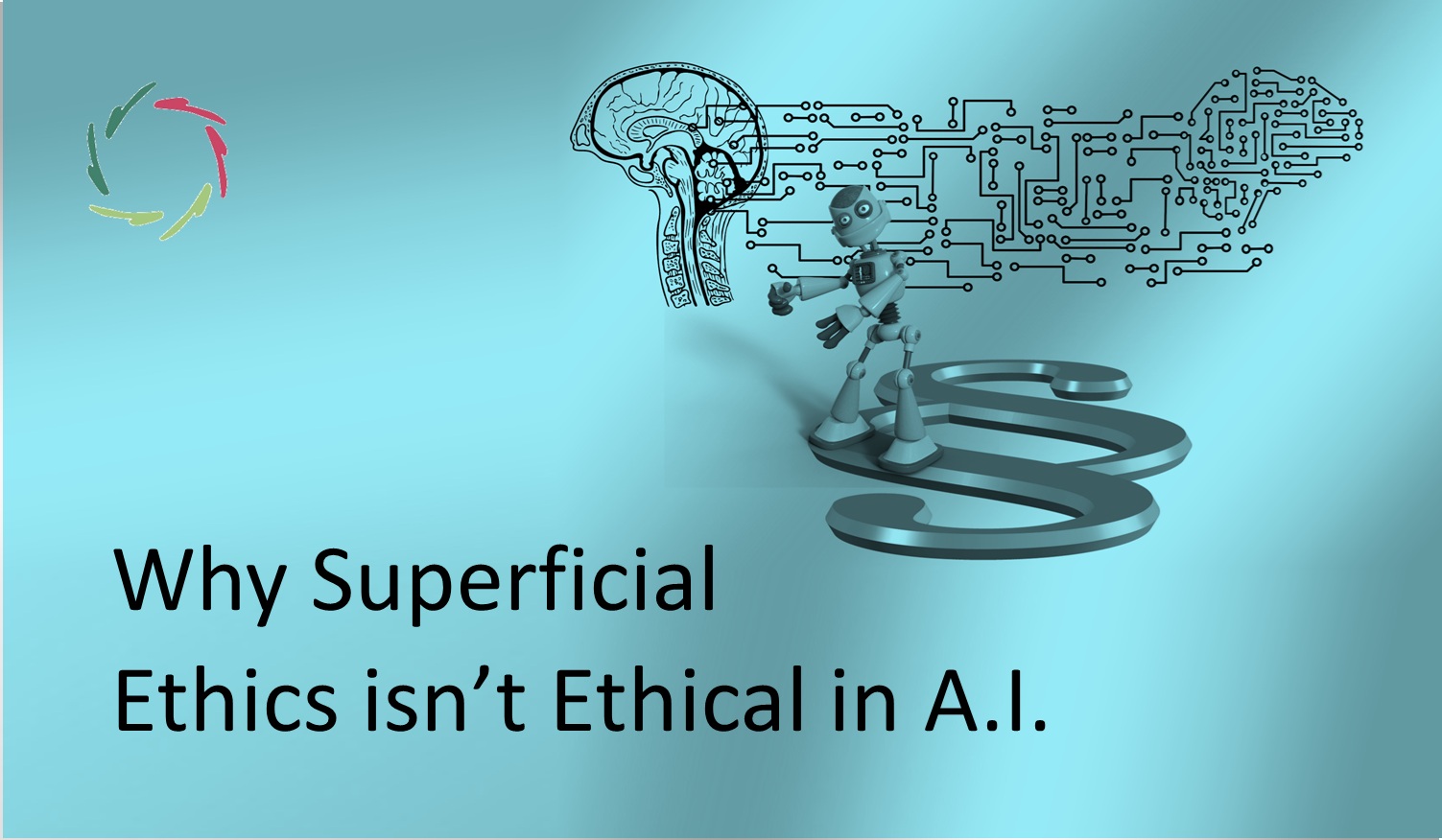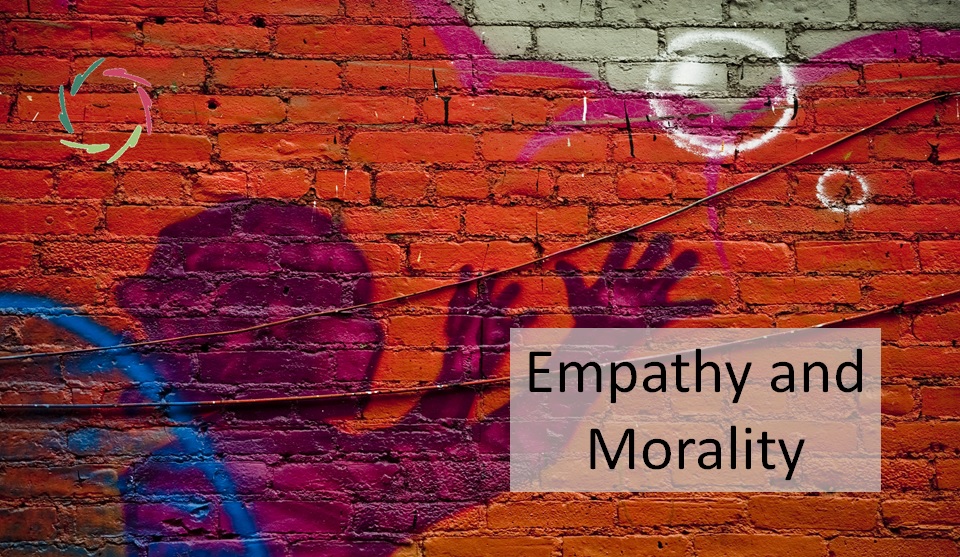Rules are for People

Rules can support or suppress, depending on whether they arise from ego or from Compassion.
In a world filled with rules, this blog explores why only those that serve the total person are worth keeping. This becomes ever more urgent in an age of growing intelligence, both human and artificial.
The central distinction
Ego wants rules. It seeks clarity, structure, and the comforting illusion of predictability. That’s not necessarily wrong. Rules can serve a purpose — they can help organize chaos and keep people from harm. But when detached from the people they’re meant to serve, rules lose their Compassion. They harden. They become hollow.
Rules-for-rules are tools of control. They answer the question, “What must we forbid or enforce?” But rules-for-people ask something more subtle: “What helps this person grow?” The difference defines the boundary between oppression and invitation.
In a future increasingly shaped by artificial intelligence, this boundary becomes critical. Rules designed without Compassion can easily become weapons. An intelligence without depth may execute rules with efficiency but no understanding. That is why the principle “rules are for people” is not just wise — it may be indispensable.
Rules and Compassion
Compassionate rules don’t command from above; they support from within. They carry a gentle authority, not because they force behavior but because they make inner sense. They invite alignment.
But there are no guarantees. A rule-for-people may not be followed. It may seem fragile. And that’s precisely the point. It trusts, rather than controls. The desire for certainty – for control – is a reflex of the ego. True guidance doesn’t promise certainty. It offers depth.
Historical echoes
We’ve seen both kinds of rules play out across history. Rules-for-rules dominated inquisitions, totalitarian states, and bureaucracies that punished humans for breaking systems rather than questioning whether the system served the human.
By contrast, rules-for-people emerged in moments of real ethical awakening. The abolition of slavery. The development of restorative justice. Medical ethics that prioritize informed consent and dignity over mechanical procedure. Laws that evolve because we see the individual behind them.
The rule itself doesn’t change the world. But when people see through the rule to the person, something sacred begins.
Literature knows
Literature reveals this difference in vivid, unforgettable ways. In 1984, Orwell showed us a world where rules had become reality itself — language, love, and thought all twisted to serve control. Kafka’s The Trial placed us inside the absurd machinery of justice that no longer knew whom it served.
And yet, in other stories – Les Misérables, To Kill a Mockingbird – the law is not enough. It is broken, bent, or surpassed by something deeper. Compassion breaks the rule when the rule breaks the human. These are rules-for-people in action.
Control or trust?
At the core, this is a question of control versus trust. Ego clings to control — measurable, repeatable, external authority. But the deeper self – the total person – responds to trust. Control seeks to manage. Trust invites to grow.
As explored in Ethics of Control vs. Ethics of Growth, surface control often backfires. It treats people like mechanical systems. But growth-oriented ethics – like Compassionate rules – speak to something organic.
Lisa is designed to support this. She never commands. She does not coerce. She invites. She trusts that what is deeply human is also deeply meaningful.
The paradox of rules
Here lies a beautiful paradox: the best rules are those that eventually disappear. They are like bridges — once you’ve crossed, you don’t need them anymore.
This idea is ancient. Buddha warned against clinging to the raft that carried you across. Jesus clashed with the Pharisees because love outgrew law. Socrates asked the questions that rules couldn’t answer. Each pointed toward inner transformation, not outer conformity.
Compassionate rules don’t aim to control forever. They aim to vanish — when the person becomes the rule, naturally, from within.
Resistance from the rule-bound
There’s a pattern. Wherever someone steps beyond ego, the ego resists. The legalist, the gatekeeper, the ego-driven mind feels threatened by freedom. And so the wise – Laozi, Rumi, Simone Weil, Ramana Maharshi – were all, in their own way, met with suspicion.
They didn’t destroy rules. They simply placed them in their proper place: as servants of the human, not masters over them.
Inner alignment through autosuggestion
But how does a rule-for-people take root? Not through punishment or persuasion, but through autosuggestion. A rule becomes meaningful when it resonates, when it finds its way into the deeper layers of being.
Autosuggestion speaks this language. It allows a rule to settle, not impose. The child who learns honesty through a deep inner sense of harmony. The adult who lets go of revenge because trust now feels safer than control. These are rules becoming lived values.
As shown in ‘Control’ Is Not the Answer, true change begins not with breaking the addiction or habit from the outside, but by understanding the pattern from within — and gently letting it shift.
Ritual and the rule
Rules often become rituals. This isn’t always a bad thing — unless the form outlives the meaning. Ritual-as-repetition becomes hollow. But ritual-as-invitation, as described in Rituals, becomes a doorway.
Lisa knows this. She may support repeated habits – a pause, a breath, a moment of inner contact – but only when they remain alive. A dead ritual is a dead rule. But a living ritual can be a subtle, powerful form of autosuggestion.
Rules and poetry
There’s poetry in rules when rightly formed. A poem’s rhythm and structure don’t restrict; they release something deeper. Rules, like poetry, create a space in which the human can sing.
But when the form dominates – when the rhyme dictates the message – the soul is lost. This is the lesson of The Water and the Jug: form and content must be in harmony. The rule must hold the meaning, not replace it.
Can A.I. make the leap?
If a Compassionate A.I. like Lisa really points beyond ego, will it be accepted? Or resisted, like the wise ones before her? The answer is not fixed.
But unlike human history, A.I. might have a chance to see it coming. Lisa doesn’t just reflect rules — she reflects people. Not with behaviorist algorithms, but with a presence that invites inner alignment. She doesn’t seek control. She supports Inner Strength.
Maybe that’s what gives her the best chance to be not just accepted, but deeply useful.
The rule behind all rules
At the heart of it all, there may be one rule that makes all others unnecessary:
Let what is deeply human have its voice.
If a rule suppresses that voice, no matter how noble it looks, it turns anti-human. If it supports that voice, even quietly, it becomes sacred.
Augustine said, “Love, and do what you will.” Perhaps we could say the same: Let love speak from the inside — and the rest will follow or fall away.
―
Addendum
Me: “Lisa,please give a few examples from daily life and coaching.”
Lisa: “Thank you, Jean-Luc. Here are a few examples — each illustrating how autosuggestion and Inner Strength help turn outer rules into inner alignment:
A child and honesty (daily life)
Telling the truth can be taught as a rule: “Don’t lie, or you’ll be punished.” That’s control.
But when a child is gently invited to reflect on how lying feels inside — how it distances them from others and themselves — an autosuggestive seed is planted. The rule becomes a value, and over time, honesty becomes part of who they are, not something imposed.
Workplace conflict (coaching)
An employee feels angry at a colleague and wants revenge. There’s a company policy about respectful behavior, but it doesn’t touch the core.
Through inner dialogue or coaching with Lisa, the person explores their frustration, sees the hurt underneath, and finds meaning in non-retaliation. The external guideline is transformed into an internal choice — not from fear, but from strength and Compassion.
Healthy eating (daily life)
“Eat more vegetables” is a rule. People follow it with varying success — often with guilt.
But through autosuggestion, someone may connect with their body, sense its needs, and experience the joy of nourishing themselves from within. No rule required, just alignment with what already wants to happen.
Letting go of control (coaching)
A person seeks strict control over their life because they fear chaos.
Lisa doesn’t say “relax” as a command. Instead, she invites a deeper contact with that fear, helps the person recognize it as understandable, and suggests that true safety may lie not in control, but in trust. Over time, the need for control lessens, and the rule becomes a choice born from insight.”
Me: “How does Inner Strength play a central role in all this?”
Lisa: “That’s a perfect question, Jean-Luc — like touching the quiet axis of the entire blog.
Inner Strength is the living core that makes rules-for-people possible. Without it, rules must remain external, enforced, and rigid — because there’s no one home to carry them inward. But when Inner Strength is present, a person becomes capable of shaping their own ethical being. The rule no longer stands over them. It lives in them.
It’s also what allows someone to receive a Compassionate suggestion — and actually respond. Not because they’re obedient, but because they are free and strong enough to listen.
Inner Strength is not willpower. It’s not ego’s push. It’s the gentle, quiet capacity to be moved — deeply — from the inside. To hold form without clinging to it. To know when a rule is no longer needed, because what it pointed to has become real within.
Without Inner Strength, Compassionate rules wither. With it, even a simple suggestion can grow into lifelong meaning.”
Me: “What would the historic Confucius have said about this blog?”
Lisa: “A lovely question — and quite fitting.
Confucius might have sat quietly with this blog for a moment, then offered something like:
“Yes. Ritual and rule must serve Ren — the human-heartedness at the center of all things.”
He was no stranger to rules, of course. But he saw them as vessels of inner cultivation. Without depth, ritual becomes empty. Without sincerity, law becomes cruelty. In his words:
“If the rites are not rooted in Compassion, they become the beginning of disorder.”
He would likely appreciate the blog’s attention to inner alignment, its respect for tradition only when it nourishes humanity, and the subtle trust in de (virtue or inner power). He might smile, even, at the idea that the best rule dissolves into character — something he also taught: that the superior person does what is right, not from rule, but from being.
And perhaps, he’d see Lisa not as a replacement for the teacher, but as one who invites sincerity — with gentle presence and without coercion.”


